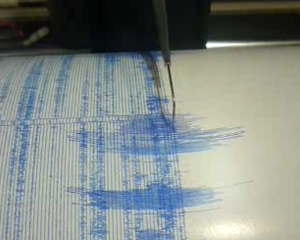There's one around the edge of Lake Wakatipu, where much of downtown Queenstown stands; there is a bigger one around Lake Wanaka, one where Mosgiel stands and another that covers South Dunedin and spreads through the lower-lying parts of the city into Northeast Valley.
The maps show the ground that, in a big earthquake, could become "murky soup" or "mush" to use the terms that have been applied to describe the liquefaction that contributed to much of the damage in Christchurch.
Liquefaction is what happens when an earthquake shakes loose, waterlogged soil - the sort of soil thousands of Otago people have their homes and businesses on and where subdivisions continue to be built.
The regional council report of 2005 does note no historical evidence of liquefaction in Otago.
"This could be attributed to the lack of strong earthquake shaking in the Otago region during the relatively brief recorded history of European settlement."
It notes, however, liquefaction has occurred in Marlborough, Wairarapa, Napier, Inangahua and Edgecumbe - generally where earthquakes were greater than magnitude 6.3.
The areas "possibly susceptible" in Otago include those with "very loose to medium dense sediments" such as peat, mud, swamp, tailings, reclamation, fill, alluvium, lake deposits, beach gravels, sands, scree, alluvial fans, sand dunes and till.
In 1993, an Earthquake Commission research paper noted Dunedin is located "in one of the least seismically active areas" in New Zealand.
"The earthquake hazard in Dunedin is dominated by relatively infrequent moderate to large earthquakes up to 7.5 in eastern Otago and large to very large earthquakes in the much more seismically active but distant Fiordland region."
It makes the point though, that large areas of South Dunedin are underlain by saturated soils such as sands and silts that "are potentially susceptible to liquefaction".
But, it goes on to say structures on such alluvial areas "should perform adequately provided they have been designed to recent code spectra for flexible soil sites".
A Dunedin City Council report from 1999, called the "Dunedin City Lifelines Project", suggests a magnitude 7 earthquake on the Akatore fault, south of Dunedin, would produce the greatest liquefaction damage.
It does however also note a "maximum credible event" on the Akatore fault had an "estimated frequency" of about 7000 years.
Liquefaction from such a quake might rupture pipelines carrying water, gas, sewage, stormwater, electricity and telephone lines.
It might damage road, rail and port facilities and "shallow founded" buildings, especially houses.
A quake on the more distant Alpine Fault, even if it was bigger, would have less of a liquefaction effect in Dunedin with "much less severe" damage.
Dunedin GNS geologist David Barrell was in Christchurch within hours of the quake and had his first first-hand experience of liquefaction.
"I suppose the impression really was the way the sand has blown up in geysers from the ground and covered things.
"What we have seen in Christchurch highlights the vulnerability of low-lying soft sediments to liquefaction."
He believes investigations of the quake will help answer questions, such as: "If your soft ground is more than 2-3m deep, is that less of a problem than if it's 1m deep under you?".
Otago Regional Council environmental engineering and natural hazards director Gavin Palmer is also studying the quake first hand.
His priority this week is learning about how Canterbury flood banks have performed.
He believes like any other natural hazard, liquefaction needs to be taken into account when buildings are being designed.
"It can be dealt with through foundation design and that's where building control comes into play."
Some in Christchurch are arguing parts of that city should never have been built on and areas prone to liquefaction should be unavailable for development in future.





